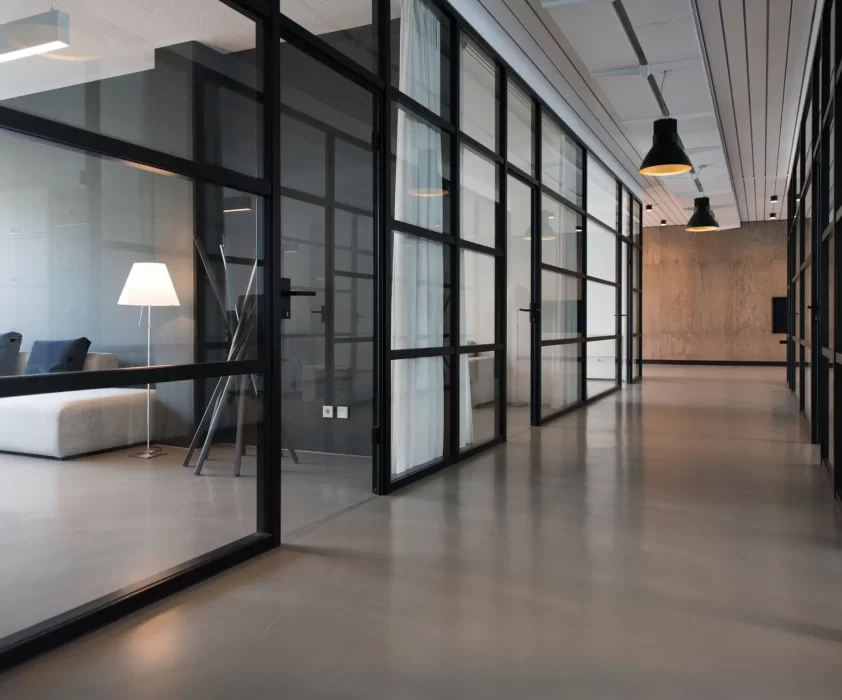
By Martin Pupil, Executive Managing Director
Everyone is asking themselves what true workplace re-entry will look like. More specifically, many are focused on the future of remote vs. on-site work environments. It is our position that this is reactionary, a short-term question and answer. Office has been evolving for the last decade and the right question today is not solely about remote vs. on site personnel. Rather, we should be asking those questions that challenge convention and provide the longer-term view of what the future of office may look like.
WHY IS FLEXIBILITY THE PREPONDERANT QUESTION?
We believe that the long-term driver for office space solutions will be options and increasingly innovative concepts around flexibility. Two obvious factors driving the need for flexibility are accounting standards and occupancy costs, but there are several other catalysts—remote working being just one of them. However, the main driver, and what tenants are really looking for, is flexibility in lease terms and space. Fueled by the advancements in technology and globalization—business and market fluctuations come at warp speed and the ability to adjust can make or break a company’s success. The landlord that can provide the greatest flexibility in lease terms and space is providing the highest strategic value and will therefore win the war for occupancy.
HOW DO YOU PROVIDE FLEXIBLE OFFICE BUILDINGS?
The real challenge is how do you incorporate flexibility into office buildings. Creating buildings that have fully flexible leases will have a negative impact on valuation due to the short-term nature of these leases. It will be harder to capitalize short-term cash flows vs. long-term cash flows. One possible solution is to dedicate a smaller percentage of an office building to flexible space—which is leased at a premium to the market—and keep the remaining space for traditional leases. Not all clients need the flexibility and have the willingness to pay for it—yes, flexibility comes at a cost.
In creating a dedicated area in your building for flexible tenants, a landlord, over time, can demonstrate that this cash flow is actually as stable as a five or ten-year term. The flexible portion of the building’s cash flow could be evaluated in the same manner that a hotel’s net operating income is evaluated—as a business and not just operating income from leases. The landlord will be rewarded for being able to create a recurring revenue stream—like an operating business as opposed to just signing leases.
The main drivers, over the last ten years, for tenants have been cost, amenities and experience. The pandemic will not change this, but will serve to accelerate these drivers. It will also accelerate the need for the newest driver, that had just started to gain traction prior to the pandemic, flexibility
WHAT HAPPENS WITH THE FULL OPEN LAYOUT CONCEPT?
Some experts suggest that the pandemic may signal the end of the full open layout concept, theorizing that many companies will adjust their workspaces to not only accommodate stricter hygienic safety protocols, but also the growth in flexible or remote working.
Consider that in the last economic boom, each new headcount needed approximately 225 square feet of office space. In this last cycle, many companies favored an open layout to manage organizational growth, and we saw the space allotment drop to roughly 150 square feet. But with social distancing needs of six feet, will COVID-19 reverse the density trend as tenants reassess their space requirements?
We don’t think it’s as hard and fast as that. Although we anticipate a reduction in office space demand due to a growth flexible work options, the majority of a tenant’s success will depend significantly on communal interaction and collaboration. Again, flexibility is the key word here. In this wait-and-see period, many companies are investing in technology that supports remote working. But ultimately, it comes down to their current operational and growth strategies, identifying what works for both short- and long-term objectives.
LET’S EXPLORE YOUR OPTIONS BY ASKING THE RIGHT QUESTIONS.
The key to having a good partner is having one that can ask the right questions and assist you in building the right strategy. Any individual can lease space, but we are here to be a partner. Call us to discuss in greater detail.
